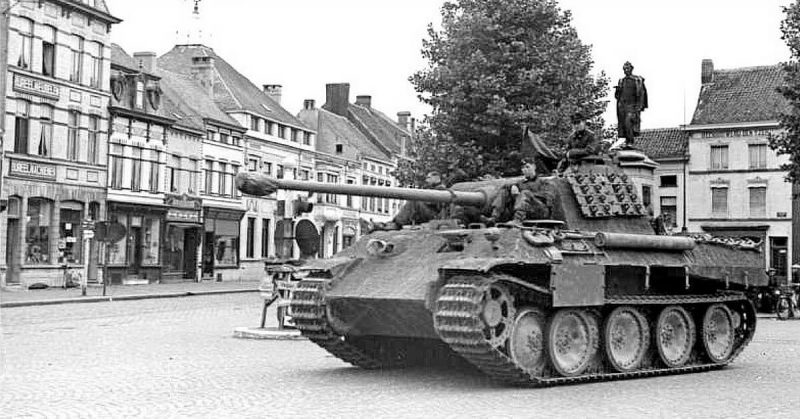The Panther tank wasn’t a heavily-armored tank or massively armed like other tanks out there (such as the Tiger), but it was considered superior as it was balanced perfectly. The panther was one of the speediest tanks the Germans had, it maneuvered far better than other tanks, and its guns were so precise and accurate. The only downside to the Panther was a habit of setting alight if its engine happened to backfire.
Six Facts about the Panther
1) Its full name is quite a mouthful – Panzerkampfwagen V Panther. However, the V was removed following an order from Adolf Hitler on February 27th, 1944.
2) More than 6,000 of these were built in Germany – however, did you know that the British Army built 9 in 1945-1946!
3) The tank was originally meant to weigh approximately 30 tons, however, it ended up coming in at approximately 50 tons due to having extra armor fitted and a larger gun – these were added on orders from Adolf Hitler.
4) The Panther came in third of the most produced fighting vehicle (German armored version). It was beaten only by the Sturmgeschutz III (9,408 built) and the Panzer IV (8,928 built)
5) The models towards the end of production could reach up to 46 km/h speeds – this matched the speed of the Tiger and was moderately quicker than the Sherman.
6) There were three versions of this tank – Models A, D, and G – each time a new model was built it had more features and improvements.
The Tank Museum
This museum and its exhibitions narrate a story from World War 1 through to the present date of armored warfare. The Museum holds six huge halls that hold a range of armored vehicles that have all seen action throughout the years. There are more than 300 exhibits here, no wonder it is classed as the best collection in the world!
